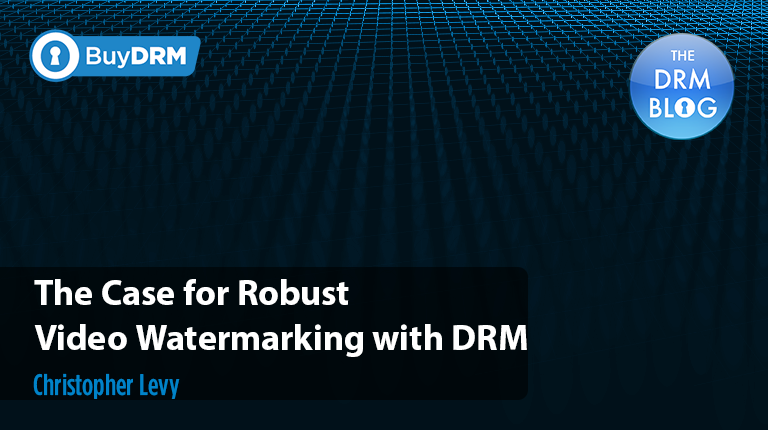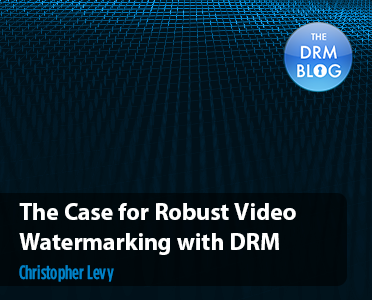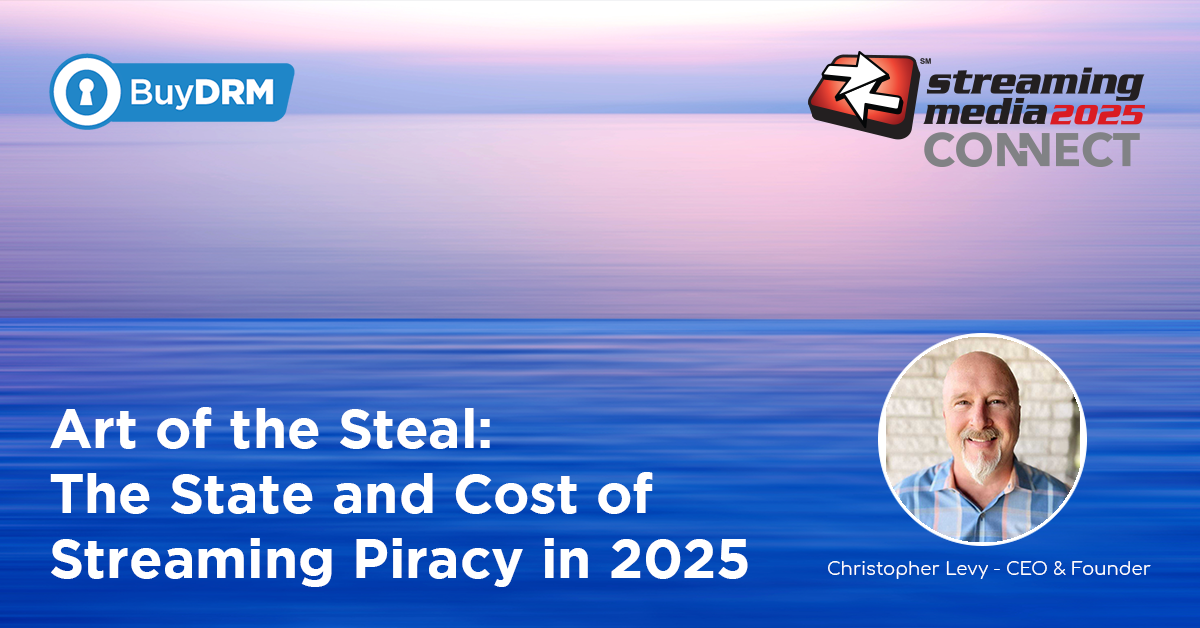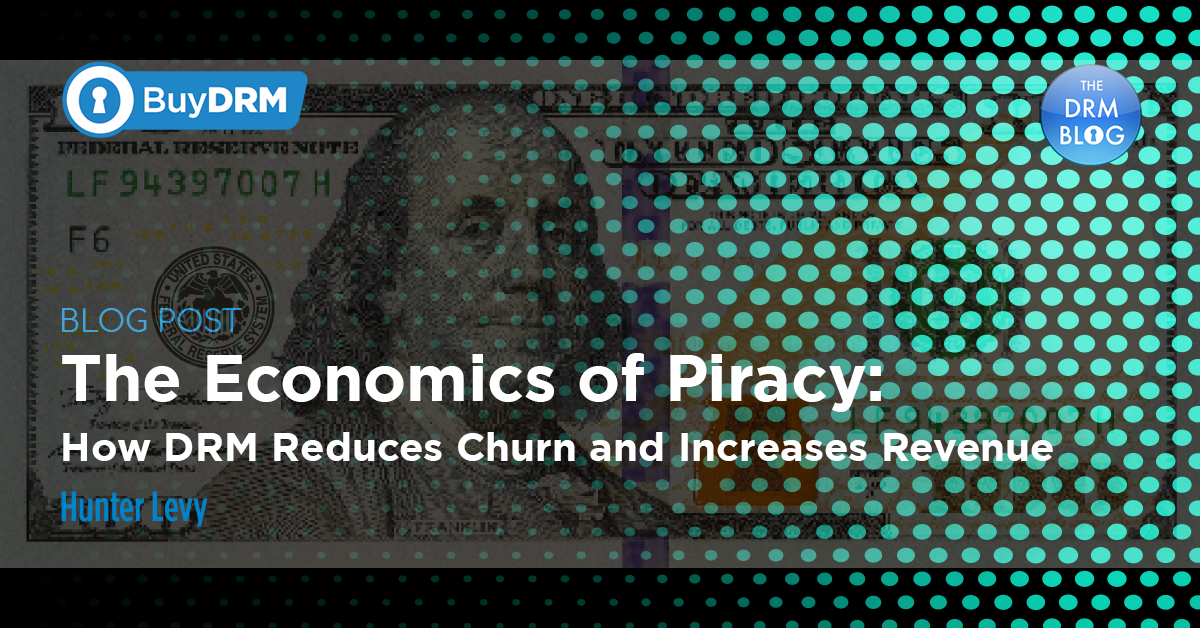In this blog, we will be looking at video watermarking and answering some important questions. What is it? How is it done? What do I need to look for in a watermarking solution? How is it used to detect piracy?
What is digital or video watermarking
Watermarking refers to marking digital content so that it can easily be traced to its source. Visual content watermarks can be either visible or invisible.
The most familiar form of watermarking is a visible overlay over a portion of the video i.e. a network logo or brand logo or station or network ID. This video overlay is carried with the video feed wherever it is streamed. Video overlays can be blocked though using a variety of technologies including cropping, overlay blocking, etc.
Requirements of a Robust Watermarking System
As visual watermarking intentionally degrades the image, it is not suitable for content intended for end-users, such as streaming. Video stream watermarks have four key requirements:
- They must be present but visually undetectable; it can’t degrade the image, even when viewed on a large-screen UHD display under ideal viewing conditions.
- They must be resilient. If the watermark can be damaged or removed, then it isn’t useful.
- They must be traceable back to the original stream for forensic purposes. Each video stream must have a unique watermark that can be traced back to the original stream.
- They must be usable at scale, supporting millions of simultaneous streams.
Types of video watermarking
Video watermarks can either be inserted at the head end or on the client device. Head-end watermarks can be further divided into encoding-time and streaming-time insertion. Each of these approaches brings its own strengths and weaknesses. Let’s look a little deeper at each technique.
Watermark insertion during encoding (Bitstream Modification)
The first type of video watermarking involves modification of the video pixels during the encoding process. This approach allows every frame of the video to be marked and provides space to store large amounts of information in the watermark. These watermarks can be inserted in either the spatial or frequency domain.
Spatial domain watermarks are applied directly to individual pixels. A simple example would be to use the least significant bit of each pixel to contain the watermark. Spatial domain watermarks have relatively low computational complexity but are generally not very robust.
Frequency domain watermarks use mathematical transformations such as Discrete Cosine Transform (DCT), Discrete Fourier Transform (DFT), and Discrete Wavelet Transformation (DWT) to embed the watermark in the image. This distributes the watermark across the entire image, making it much more robust against attack. Visual impact is minimized by putting the watermark in portions of the frequency domain that are less noticeable. The primary downside to frequency domain techniques is their computational complexity.
Watermark insertion during the encoding process has been used for years in the pre-production environment, including daily reviews and pre-release screening copy distribution. The cost of doing a unique encode for each copy is manageable when only a few copies of each video are needed and is justified by the high value of the content.
BuyDRM’s MultiMark Server is an innovative improvement to this technique that retains all its benefits while providing the scalability required for OTT streaming applications. The video is prepared for watermarking during the encoding process, but instead of inserting the actual watermark placeholders are reserved for later insertion. At streaming time, the MultiMark server inserts the stream-specific watermark in the previously identified placeholder locations.
A/B Session-based watermarking
A/B session watermarking was developed to address the computational cost of per-session watermark insertion. Instead of preparing a unique watermarked video for each session, two versions, designated A and B, are prepared at encoding time. At streaming time, the packager uses the A and B versions as a signaling channel to carry the session information, with each segment (2-6 seconds) containing 1 bit.
The primary downsides to this approach are that it doubles the storage requirements while providing only 10 to 30 bits per minute for the actual watermark. It is also subject to what are known as temporal collusion attacks, where multiple sessions of the same content are merged to obscure the watermark.
Client-side watermarking
Client-side watermarks are inserted into the video in the client device, allowing the complete watermark to be inserted into every frame of the video, just like encoding-time insertion. Unlike encoding-time insertion, client-side watermarking distributes the computational load across all of the client devices, making it scalable for OTT video.
Rather than re-encoding the video, client-side watermarks are applied using a video overlay technique. This leads to a direct balance between robustness and watermark visibility. A high-contrast watermark in the middle of the video is hard to remove but very visible. A small watermark on the end of the frame is easily removed by cropping the video.
A bigger concern is the complexity of implementing the client-side watermark across all of the required client devices and preventing a compromised client from avoiding the watermark entirely.
How is Watermarking used in detecting Piracy?
Video Watermarking is the primary tool for combatting OTT streaming piracy. Along with the insertion tools, a complete watermarking solution includes tools to extract and identify the watermark from a video file.
When a stream is watermarked, a record of the stream and the associated watermark is stored in a database. When a suspected pirate copy of a video is found, the watermark is extracted and compared with the streaming database to find the source of the stream. When content is re-distributed illegally, the watermark is used to show how many copies were distributed and who stole them when assessing damages. For live streaming, when a pirated stream is discovered the watermark traceability allows you to identify and terminate the source of the stream in real-time without impacting legitimate customers.












